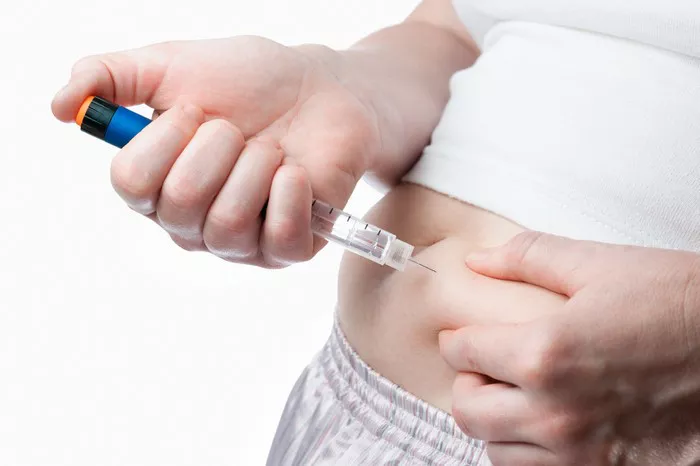Insulin resistance is a complex metabolic condition characterized by the body’s diminished response to insulin, a hormone crucial for regulating blood sugar levels. It’s a pivotal concept in the realm of diabetes and metabolic disorders, impacting millions of individuals worldwide. In this article, we delve into the intricacies of insulin resistance, exploring its mechanisms, implications, diagnostic approaches, and management strategies.
Introduction to Insulin Resistance
Insulin, produced by the pancreas, plays a fundamental role in glucose metabolism. Upon consumption of carbohydrates, the body releases insulin to facilitate the uptake of glucose into cells, where it’s utilized for energy production or stored for future use. Insulin also regulates lipid and protein metabolism, making it indispensable for overall metabolic health.
Insulin resistance occurs when cells become less responsive to the effects of insulin, leading to impaired glucose uptake. To compensate for this resistance, the pancreas increases insulin production, resulting in elevated circulating insulin levels—a condition known as hyperinsulinemia. Despite these efforts, blood sugar levels remain elevated, eventually culminating in prediabetes, type 2 diabetes, and other metabolic complications.
Mechanisms of Insulin Resistance
The mechanisms underlying insulin resistance are multifaceted and involve intricate interplays between genetic, environmental, and lifestyle factors. Adipose tissue, skeletal muscle, and the liver are key players in insulin sensitivity, and dysfunction in these tissues contributes significantly to insulin resistance.
In adipose tissue, excessive accumulation of fat—especially visceral adiposity—promotes the release of pro-inflammatory cytokines and adipokines, which interfere with insulin signaling pathways. This chronic low-grade inflammation, termed “meta-inflammation,” disrupts insulin action and promotes insulin resistance.
Similarly, in skeletal muscle—the primary site of glucose disposal—impaired insulin signaling pathways hinder glucose uptake and utilization. This dysfunction is exacerbated by factors such as physical inactivity, obesity, and ectopic lipid deposition within muscle cells, which further impede insulin sensitivity.
The liver, responsible for maintaining glucose homeostasis, also plays a pivotal role in insulin resistance. Excess hepatic lipid accumulation, coupled with dysregulated gluconeogenesis and glycogenolysis, contributes to hepatic insulin resistance. This results in increased hepatic glucose output, exacerbating hyperglycemia and insulin resistance.
Risk Factors and Clinical Implications
Insulin resistance is closely intertwined with several metabolic risk factors, including obesity, sedentary lifestyle, poor dietary habits, and genetic predisposition. Individuals with a family history of type 2 diabetes, polycystic ovary syndrome (PCOS), or metabolic syndrome are at heightened risk of developing insulin resistance.
The clinical implications of insulin resistance extend beyond glycemic control, encompassing a spectrum of metabolic abnormalities. These include dyslipidemia, characterized by elevated triglycerides and reduced high-density lipoprotein (HDL) cholesterol, as well as hypertension and atherosclerosis—all of which contribute to increased cardiovascular risk.
Furthermore, insulin resistance is intricately linked to the pathogenesis of non-alcoholic fatty liver disease (NAFLD), a burgeoning global health concern. NAFLD encompasses a spectrum of liver conditions, ranging from simple steatosis to non-alcoholic steatohepatitis (NASH), fibrosis, and cirrhosis. Insulin resistance-driven lipid accumulation in the liver plays a central role in the development and progression of NAFLD, highlighting the systemic ramifications of insulin resistance.
Diagnosis of Insulin Resistance
Diagnosing insulin resistance poses a clinical challenge, as it often manifests silently without overt symptoms until metabolic derangements ensue. However, several surrogate markers and diagnostic tools aid in its identification and assessment.
Fasting plasma glucose (FPG) and hemoglobin A1c (HbA1c) levels serve as initial screening tests for impaired glucose metabolism, although they may not capture early-stage insulin resistance. More sensitive indices, such as the homeostatic model assessment of insulin resistance (HOMA-IR) and quantitative insulin sensitivity check index (QUICKI), provide quantitative measures of insulin sensitivity based on fasting insulin and glucose levels.
Oral glucose tolerance testing (OGTT), coupled with measurements of insulin secretion and sensitivity, offers a comprehensive assessment of glucose homeostasis and insulin dynamics. Additionally, imaging modalities such as magnetic resonance spectroscopy (MRS) and positron emission tomography (PET) can quantify ectopic lipid deposition and glucose uptake in insulin-sensitive tissues, aiding in research settings and specialized clinical evaluations.
Management Strategies for Insulin Resistance
The management of insulin resistance encompasses lifestyle modifications, pharmacotherapy, and targeted interventions aimed at mitigating metabolic dysfunction and reducing cardiovascular risk.
Lifestyle Modifications: Dietary interventions focusing on weight loss, reduced carbohydrate intake, and increased consumption of fiber-rich foods, fruits, and vegetables are cornerstones of insulin resistance management. A balanced diet comprising lean proteins, healthy fats, and complex carbohydrates promotes glycemic control and enhances insulin sensitivity.
Regular physical activity, including aerobic exercise and resistance training, augments insulin action, improves glucose uptake, and promotes weight loss and metabolic health. The American Diabetes Association recommends at least 150 minutes of moderate-intensity aerobic activity per week, supplemented with muscle-strengthening exercises on two or more days per week.
Pharmacotherapy: Pharmacological agents targeting insulin resistance and associated metabolic abnormalities play a complementary role in diabetes management. Metformin, a first-line therapy for type 2 diabetes, enhances insulin sensitivity, suppresses hepatic glucose production, and promotes weight loss. Thiazolidinediones (TZDs) exert insulin-sensitizing effects by activating peroxisome proliferator-activated receptor gamma (PPAR-γ), improving insulin action in adipose tissue, muscle, and liver.
Other classes of medications, including sodium-glucose cotransporter-2 (SGLT-2) inhibitors, glucagon-like peptide-1 receptor agonists (GLP-1 RAs), and dipeptidyl peptidase-4 (DPP-4) inhibitors, target various aspects of glucose metabolism and cardiovascular risk factors, offering personalized treatment options based on individual patient profiles.
Emerging Therapies: Ongoing research endeavors focus on novel therapeutic modalities aimed at ameliorating insulin resistance and its sequelae. These include mitochondrial-targeted antioxidants, gut microbiota modulation, and gene-editing techniques targeting key metabolic pathways implicated in insulin resistance.
Conclusion
Insulin resistance represents a pivotal nexus in the pathogenesis of type 2 diabetes and related metabolic disorders, exerting far-reaching implications on health outcomes and quality of life. Understanding the mechanistic underpinnings of insulin resistance, along with its clinical manifestations and diagnostic modalities, is imperative for early detection and targeted interventions.
By adopting a multifaceted approach encompassing lifestyle modifications, pharmacotherapy, and emerging therapeutic modalities, healthcare providers can effectively mitigate the metabolic derangements associated with insulin resistance, thereby reducing the burden of diabetes and its complications on a global scale. Continued research efforts aimed at unraveling the complexities of insulin resistance hold promise for the development of innovative therapies and personalized treatment strategies tailored to individual patient needs.
Related topics:
What Supplement Is Best For Insulin Resistance?
























